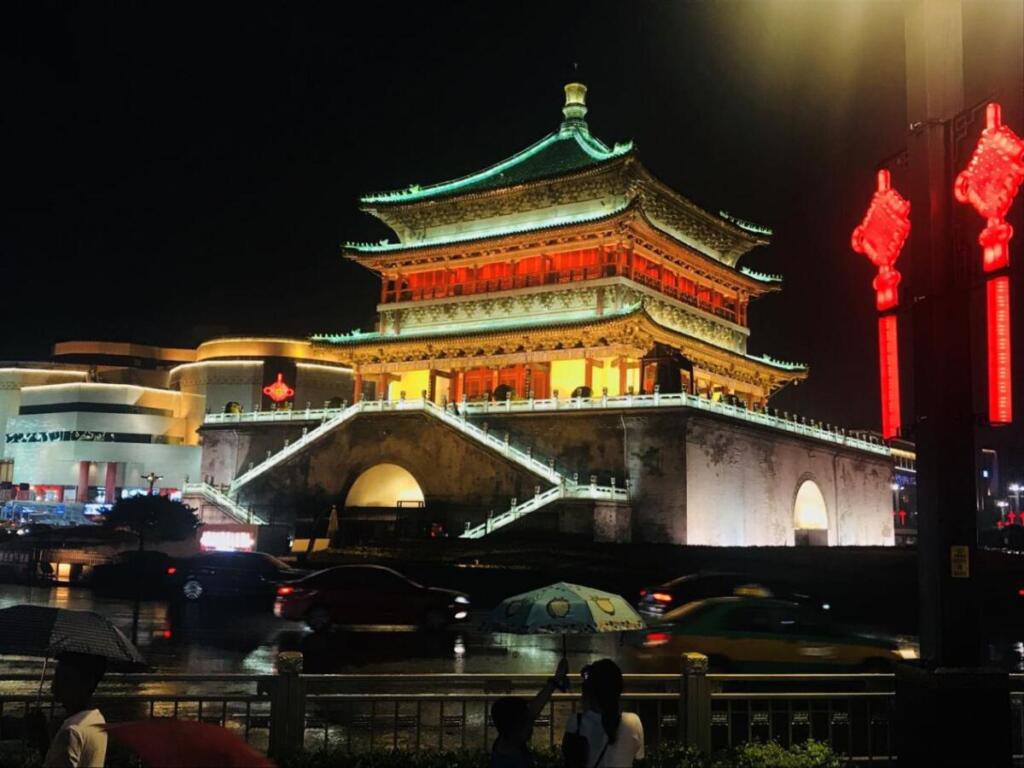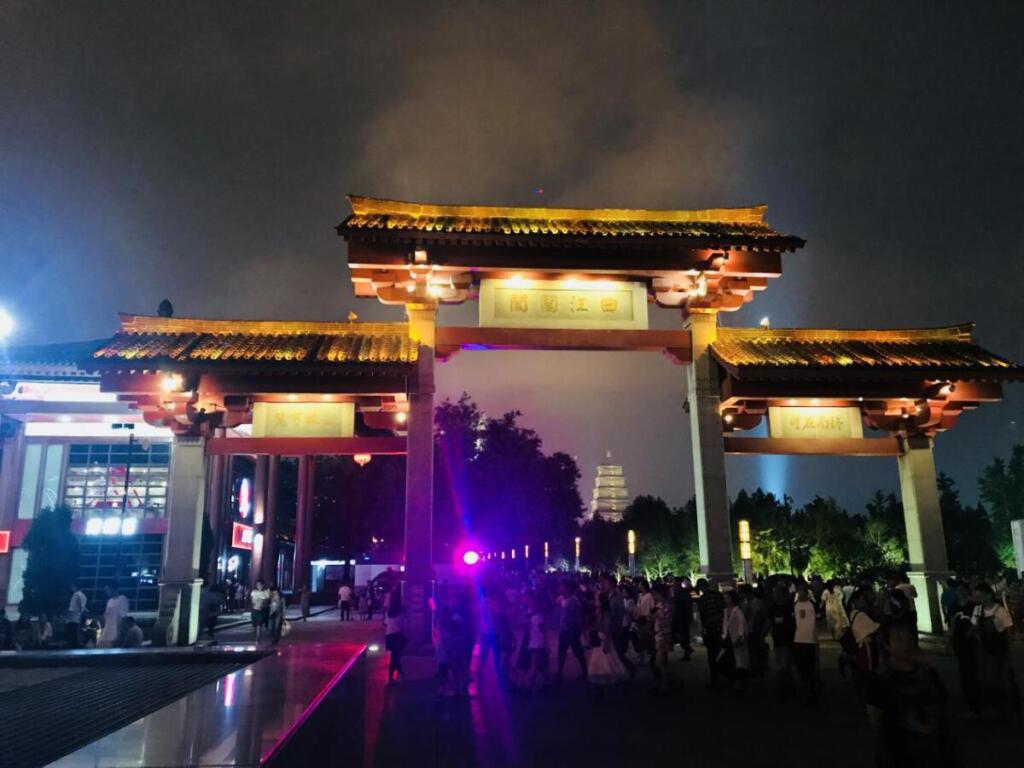Xi 'an is my hometown. As a Xi 'an native, whenever I talk about Xi'an, my heart roars with pride.
I know this is not just a sense of pride, but also a deep sense of belonging to my hometown. There is a song called the "Xi'an people's song", in which a line says: “Xi 'an people can't go anywhere without eating their Pita Bread Soaked in Lamb broth”.
I think no matter in which city, its food brings back to people the most profound memories, that start from the taste buds.
There are a lot of special foods in Xi 'an, mainly pasta based dishes, the most famous of which is biangbiang noodles.
Biangbiang noodles are a traditional folk flavored noodle, that are also called the traditional Shaanxi belt noodles. They get their name because of the sound of the Biang noodles make during their preparation.
Right after steamed bread, this is the most basic and common flour based food for Xi'an people: "biangbiang noodles in chili oil sauce".
Biangbiang noodles are often made with flour ground from Guanzhong wheat (Guanzhong: the central Shaanxi plain). The long, thick and wide noodles are kneaded by hand.
The chef would add some water used to cook the noodles’ to a mixture of salt, sauce, vinegar, monosodium glutamate and other condiments, to create the sauce. Then he would add the noodles in it, with some dried chili powder and scallion to garnish, and finally he would drip the hot spicy oil as a final touch to complete the dish.
In the process of making noodles, the noodles must be shaken vigorously on the cutting board a few times. During the preparation of Biang Biang noodles, the pasta strands are gradually stretched, a step which makes the noodles’ texture very strong and elastic.
Another noteworthy food is Liangpi (steamed cold noodles).
A pretty set of common dishes to have in Xian, steamed cold noodles together with Rougamo (marinated meat in a baked bun) and a bottle of ice peak beverage.
Liangpi dough can be prepared with two different kinds of flours, rice flour and wheat flour. The raw material are the ones that give it different textures and flavours. The former one to the bite is softer and the latter is slightly harder.
The cold noodles start out as a round sheet of dough, that after steaming is cut up into strips and placed in a bowl, and then mixed with shredded cucumber, gluten chunks, bean sprouts, red oil, chili, salt, and vinegar, After a simple mix, you can eat it to your heart's desire.
The cold noodles taste soft, the cucumber is crunchy, and the gluten chunks has already soaked up the soup like a sponge, a mix of textures which combined with both the sour and spicy flavors, it is absolutely a joy to eat.
After eating a bit of the cold noodles, if you have another bite of Rougamo or a sip of ice peak drink, it becomes a real “taste party”!
The meat of Rougamo is usually marinated the night before, and the leavened breads are baked until crisp on an iron plate. Shredded braised meat stuffed in a baked and leavened bread, leavening helps the bread become nice and crisp, and helps the meat stay juicy and tender.
The whole Rougamo is always full of marinated flavor. If you do not like to eat meat, there are often vegetables Rougamo (baked bread with various vegetables in it).
There are always many other dishes for the customers to choose from, like shredded potatoes, shredded carrots, fried chili, onion, cucumber and the rice crust.
The shopkeepers will give you the baked bread directly, cut into two pieces so you can put whatever they have between the two slices of bread. The enthusiastic shopkeeper will let you help yourself and you can add as many sides and fillings as possible in between the bread.
It’s worth mentioning that the Pita Bread Soaked in Lamb Soup (Chinese name: yangrou paomo), which I mentioned at the beginning is even more delicious.
The main ingredients are mutton, spring onion, verminum, garlic and so on. It is a delicious dish in shaanxi province, especially in xi 'an, which enjoys the best reputation for its Pita Bread Soaked in Lamb Soup.
I once read an interesting story: a man came to Xi'an to sightsee. When he got hungry around noon, he went to a yangrou paomo restaurant for lunch. The waiter gave him a large bowl with two pieces of hard bread in it and left. The man waited for a long time but the waiter didn't come back. He was very hungry, but he was too embarrassed to ask the waiter how to eat the dish he had just brought.
The waiter gave him a large bowl with two pieces of hard bread in it and left. The man waited for a long time but the waiter didn't come back. He was very hungry, but he was too embarrassed to ask the waiter how to eat the dish he had just brought.
When he saw the hot tea on the table, he chose to eat the two hard pieces of bread with the tea. When he finished his meal, the waiter came over and asked him where the bread was. "I ate it!" he said.
The waiter was very surprised and said: "How could the chef cook the Pita Bread Soaked in Lamb Soup for you without the hard bread pieces?"
At that time, he knew that the authentic way to enjoy the Pita Bread Soaked in Lamb Soup was to tear the baked bread into small pieces, and then let it be cooked by the chef.
After cooking, the hard bread pieces soften from all the soaking in the lamb soup, which often has vermicelli and mutton slices in it, and if you want, you can also sprinkle some scallion and cilantro pieces on top. It's perfect in color, flavor and taste.
The food mentioned above is often eaten at dinner time. As for breakfast, there are steamed stuffed buns, soybean milk, fried bread sticks, and spicy soup Hu.
These are also the foods that I have been eating from my childhood until now. Some of them may not be the special food of Xi 'an, even they could be found all over China, but if you ask a local person in Xi 'an where the best place to eat them is, they would definitely tell you it’s in an alley underneath their house.
Food is the most important thing for us human beings. It is an exclusive memory of the city and its cultural heritage. As the ancient capital of 13 dynasties, Xi'an has countless local delicacies.
If you come to Xi 'an to visit the Terra-cotta Warriors and the Greater Wild Goose Pagoda, don't forget to taste its delicious food, you'll dangerously fall in love with it, and with this city.

A taste of Xi 'an
- Yichu
- Category: Discover China
powered by social2s







Follow us